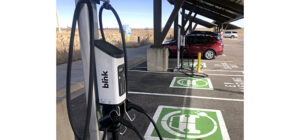Auto insurers face a tightrope of increasing their premiums while still losing money and maintaining customer trust levels
Troy, Mich.—With U.S. auto insurance rates up 11.2% on average during the past year — and insurers still losing an average of five cents on every dollar of premium they collect — sky-high premiums do not appear to be leveling off anytime soon.
According to the J.D. Power 2024 U.S. Auto Insurance Study, these rate increases do not necessarily erode customer satisfaction with auto insurers. When customers have a high level of trust in their insurer, customer satisfaction and brand advocacy increase considerably, even in the face of rate increases. However, slightly more than half (51%) of customers say they have little trust in their auto insurer.
“Auto insurers are in a tough position right now,” said Breanne Armstrong, director of global insurance intelligence at J.D. Power. “With repair costs still rising — and with more than 20% of vehicles involved in collisions now considered total write-offs — insurers are still losing money, despite passing along huge price increases to their customers. What’s interesting in J.D. Power data is that even though high premiums negatively affect customer satisfaction, those negative influences can be offset by high levels of trust that insurers will come through when they are needed.”
Following are some key findings of the 2024 study:
- Trust has huge influence on customer satisfaction and brand loyalty: The average overall satisfaction score among auto insurance customers with the highest level of trust in their insurer is 917 (on a 1,000-point scale), which is 426 points higher than among those who have the lowest level of trust in their insurer. Similarly, 90% of those in the high-trust category say they are likely to renew their policy with the same insurer vs. just 30% among those in the low-trust category.
- Most insurers miss the mark on trust: Slightly more than half (51%) of customers fall into the low-trust category, while 15% have high levels of trust and 34% have mid levels of trust.
- Trust varies by region; Florida scores lowest: The lowest trust scores are in regions with the largest proportion of insurer-initiated rate increases. Florida, where the incidence of rate increases is highest, also has the highest percentage of customers (55%) with low levels of trust.
- Managing expectations around rate increases is key component to building trust: The average trust score among customers who experience an insurer-initiated increase — but who fully understand the reasons for that increase and expect the increase — is 735. That is just one point lower than the average trust score among customers who experienced an insurer-initiated rate decrease (736).
The study measures customer satisfaction with auto insurance in 11 geographic regions. A separate category addresses usage-based insurance (UBI), along with diagnostics that influence UBI participants’ experience with their insurer’s usage-based auto products.
Highest-ranking auto insurers and scores by region are as follows:
• California: Auto Club of Southern CA (AAA) (684)
• Central: Shelter (677) (for a fourth consecutive year)
• Florida: Auto-Owners Insurance (654)
• Mid-Atlantic: Erie Insurance (713) (for a third consecutive year)
• New England: Amica (709)
• New York: Travelers (667)
• North Central: Erie Insurance (710) (for a fourth consecutive year)
• Northwest: PEMCO Insurance (666)
• Southeast: Alfa Insurance (693)
• Southwest: CSAA Insurance Group (AAA) (683)
• Texas: Texas Farm Bureau (686)
• Usage-Based Insurance (UBI): Nationwide (842)
The U.S. Auto Insurance Study measures customer satisfaction with auto insurers based on performance in seven core dimensions on a poor-to-perfect rating scale. Individual dimensions measured are (in order of importance): level of trust; price for coverage; people; ease of doing business; product/coverage offerings; problem resolution; and digital channels. This year’s study is based on responses from 41,242 auto insurance customers and was fielded from August 2023 through April 2024.





Comments are closed.